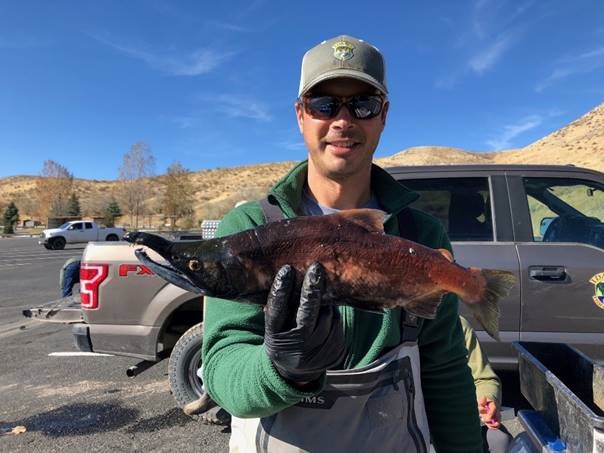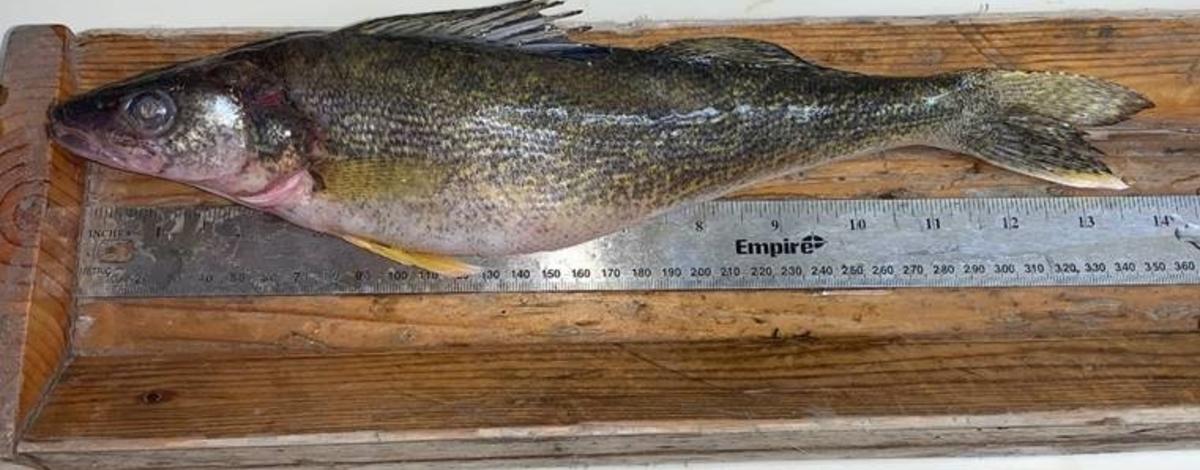Since the discovery of illegally introduced Walleye to Ririe Reservoir in 2008, annual monitoring of Walleye populations were implemented to determine their status and impacts on the existing fishery. Fall Walleye Index Netting (FWIN) conducted by fisheries biologists began in 2010 and ran consecutively until 2017. They found that the Walleye population was low and stable, so they chose to change monitoring to a three-year rotation. During the last week of October 2020, fisheries biologists conducted their ninth year of gill netting for Walleye in Ririe Reservoir by setting the nets in the same locations as previous surveys for the same number of nights.
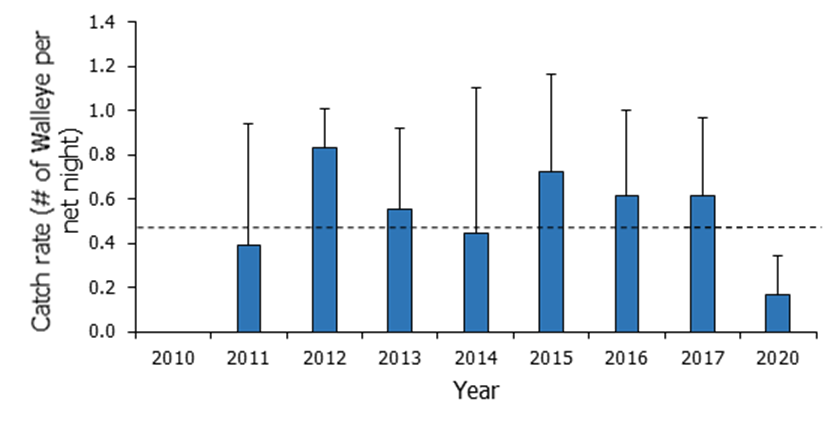
The catch rate for Walleye this year (0.17 fish per net night) was lower than in previous years, but they are still present in the reservoir (Figure 1). The number of Walleye in Ririe Reservoir is low, as Walleye made up less than 1% of the total catch of game fish in the nets. Yellow Perch, on the other hand, made up 77% of the game fish caught in the nets. Although anglers and biologists have caught large Walleye in the past, no Walleye greater than 15 inches were captured this year (Figure 2).
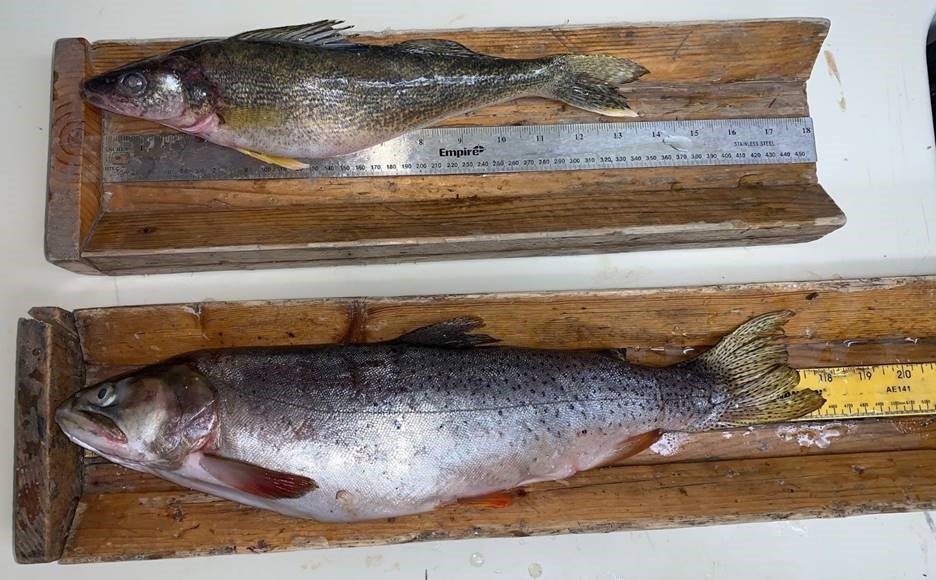
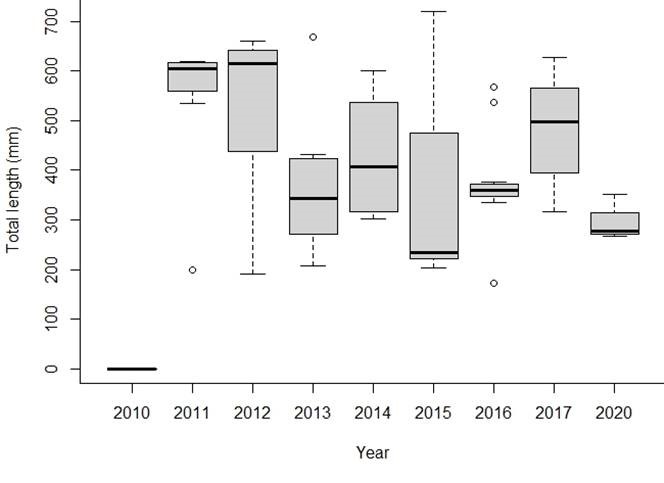
Kokanee measuring in the 10 to 12-inch range and Yellow Perch up to 10 inches in length were also sampled. "Anglers can expect ice fishing for kokanee and perch on Ririe to be excellent this winter," says Fisheries Biologist John Heckel. "I am also happy to report the most Yellowstone cutthroat trout we have sampled since this monitoring began."
